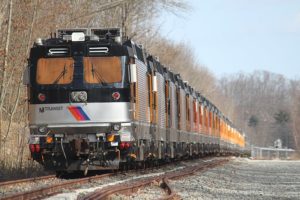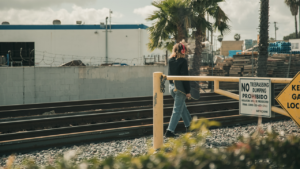April issue feature—Destruction along the tracks by the Del Mar cliffs
Written by RT&S Staff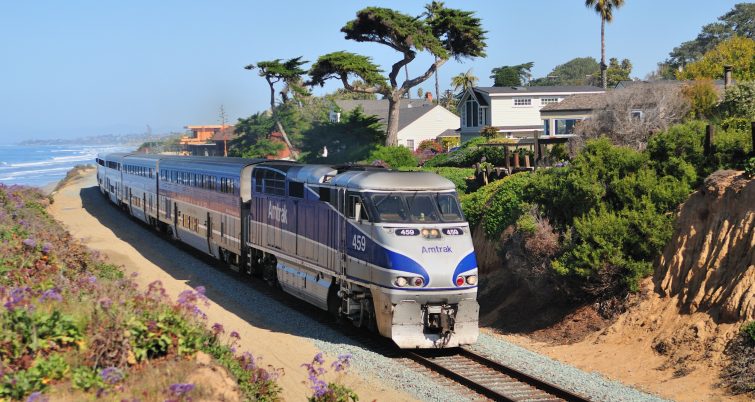
The earth keeps hitting itself, harder and harder. It’s a horrible case of rhythmic abuse and sudden acts of violence.
The act is both natural and uncontrollable, and it is becoming more severe. The shoreline that runs along the West Coast has been eroding for centuries. Waves generated by the Pacific Ocean hit the cliffs, over and over again … and it’s in rhythm. Wave strength has been great for a long time, but for the past decade climate change has been the steroid nobody has wanted to see. Warmer oceanic temperatures at higher sea levels are creating waves that pack a far more powerful punch against the earth’s crust, and forming a wicked 1-2 combo is the extreme weather events which are producing a higher volume of precipitation at a much faster rate … they are the sudden acts of violence.
The Del Mar bluffs, or cliffs, decorate the outermost edge of southern California not far from San Diego. Riding the edge of that outermost edge is a line of track used by freight and passenger rail. The San Diego Association of Governments (SANDAG) has a customer transit line that uses the track; about eight trains in the morning and evening peak hours. With the cliffs eroding at an unpredictable rate, officials are seeing the red flags and are making alternate plans for rail transit in the future, but what about today? What about the next decade or so? Is the rail line in danger of collapsing in an instant? In the first of a multiple-part series, RT&S magazine takes a look at the threat to the Del Mar cliffs and the train line.
November rain
Another round just took place. Back on the week of March 16 San Diego was hit by a Pacific storm which generated more than a half-inch of rain in about a 24-hour window.
Since October 2019, rain at the San Diego International Airport has measured in at 8.91 in., a half-inch above the average. On Nov. 28 2019, the area received a little more than 2 in. of precipitation, and the worst happened in terms of erosion. It could have been a nightmare for SANDAG. A section of the Del Mar cliff collapsed following a strong storm, just a few feet away from the coastal railroad tracks.
“There was a significant amount of rain,” John Haggerty, director of Engineering and Construction for SANDAG told RT&S. “That rain more or less overwhelmed the drainage ditches and other structures underneath the track that basically drain from the east … capture water on the east side of the tracks and transfer it over to the west side toward the ocean … that just got overwhelmed and water came over the top, crossed the tracks and in two locations caused erosion on the bluffs.
“That erosion actually exposed some of the piles we had already put into the bluff to stabilize the track.”
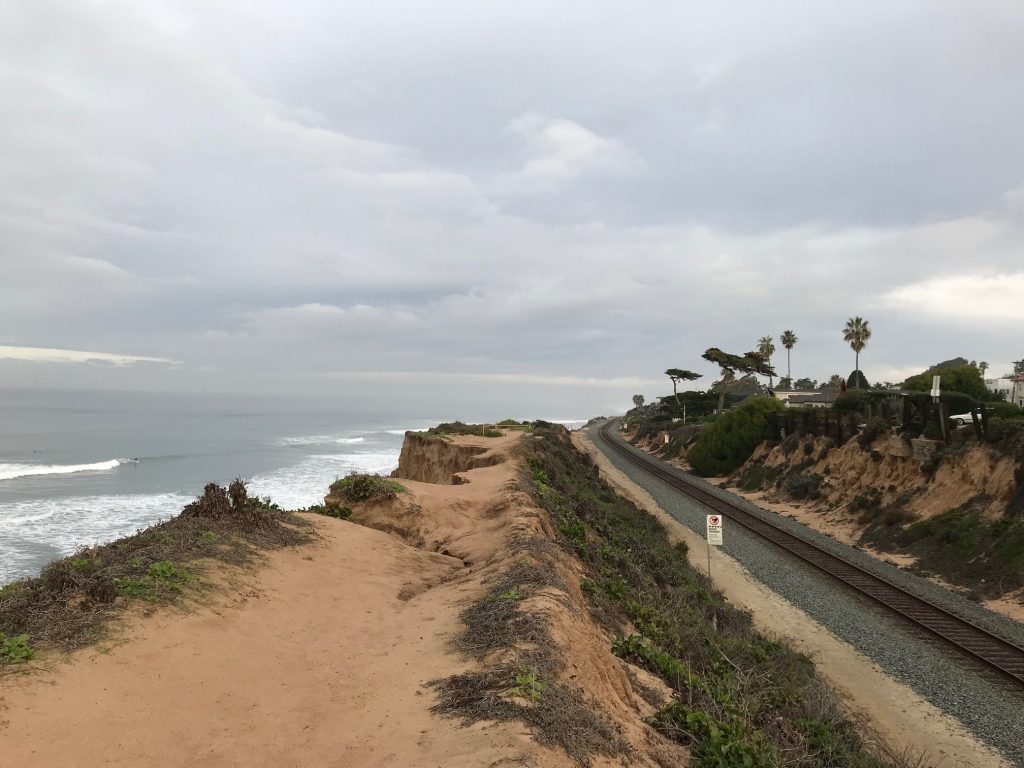
Mid Coast Transit Constructors, a joint venture of Stacy and Witbeck, Herzog and Skanska, was working close to the site and mobilized equipment to make the emergency repairs. According to Haggerty, crews “put in some lagging and then poured concrete in the voids behind the wall at one location.” The following weekend the contractor took the piles that were exposed, did some excavation, added a reinforcing mesh between the piles and did a shotcrete finish that was colored concrete with a textured look in an effort to blend in with the surroundings.
Even though recent history shows San Diego and southern California in general are getting hit with more severe rain events than ever before, the top concern has to do with the wave action and a rising sea level. Nature recently published an article online on the melting of the Greenland and Antartic ice sheets. A group of 89 polar scientists from 50 organizations put together the most comprehensive evaluation ever of the ice sheets. Results from 11 satellite missions monitoring Greenland and Antartic showed that both are losing ice six times faster than back in the 1990s.
Researchers at the European Union’s Joint Research Center in Ispra, Italy, are reporting that half of the world’s sandy beaches could disappear by the end of the century under the current pace. The team, however, admits that the prediction is on the conservative side, and beaches could begin to vanish much earlier than the year 2100.
Patrick Barnard, research geologist at the USGS’s Pacific Coastal and Marine Science Center, said the combination of extreme precipitation and wave activity is making everything dealing with erosion in, on and around the Del Mar cliffs even more unpredictable.
“Coastal bluffs are more prone to failure after heavy rainfall, and that combined with wave attack … those are the two main processes that are driving the cliffs to fail,” he told RT&S. “But it is still inherently a random process that we are still trying to understand better.
“What we do know is the sea level is rising and it is accelerating, and that means the base of these bluffs are going to be hammered by waves more and more frequently throughout the century. What we have shown in our modeling work is the rate of cliff retreat is going to increase, and it could as much as double by the end of the century depending on which sea level rise curve we end up on.”
Using current data, Barnard said the sea-level-rise scenario over the next 80 years or so ranges from 62 ft to as much as 135 ft. However, those numbers could change.
Adam Young is an expert when it comes to cliff retreat in the state of California. He is a project scientist with Scripps Institution of Oceanography at the University of California at San Diego, and has been studying the movement of cliffs in the area for years. Every week his crew is out taking sonar images of the cliffs in the hopes of detecting a trend with the movement. Young said erosion along the Del Mar cliffs has been higher than it has ever been in recent times.
“Particularly last winter there was a lot of erosion,” he told RT&S. “The rates are probably about an order of magnitude higher than they typically are in that area.”
Unpredictable instability
“The current situation is stabilized,” remarked Haggerty when asked about the Del Mar cliffs back in late February.
“So right now all of the service on the line continues to run.”
However, the erosion that hit the Del Mar cliffs back in November, which almost took a portion of rail with it, has definitely put a spotlight on the threat.
“What happened [in November] is exactly what we anticipated in terms of bluff retreat, that the bluff would retreat, it would hit the piles and then we would put up a retaining wall connected to those piles,” replied Haggerty.
SANDAG has a progressive program in place to continue to reinforce the cliffs, and that program has been accelerated since November 2019. The Del Mar cliffs are essentially broken down into sections, and work is going on right now on sections 4, 5 and 6. The work is going to reinforce the bluffs and fix the maintenance issues, as well as address drainage issues.
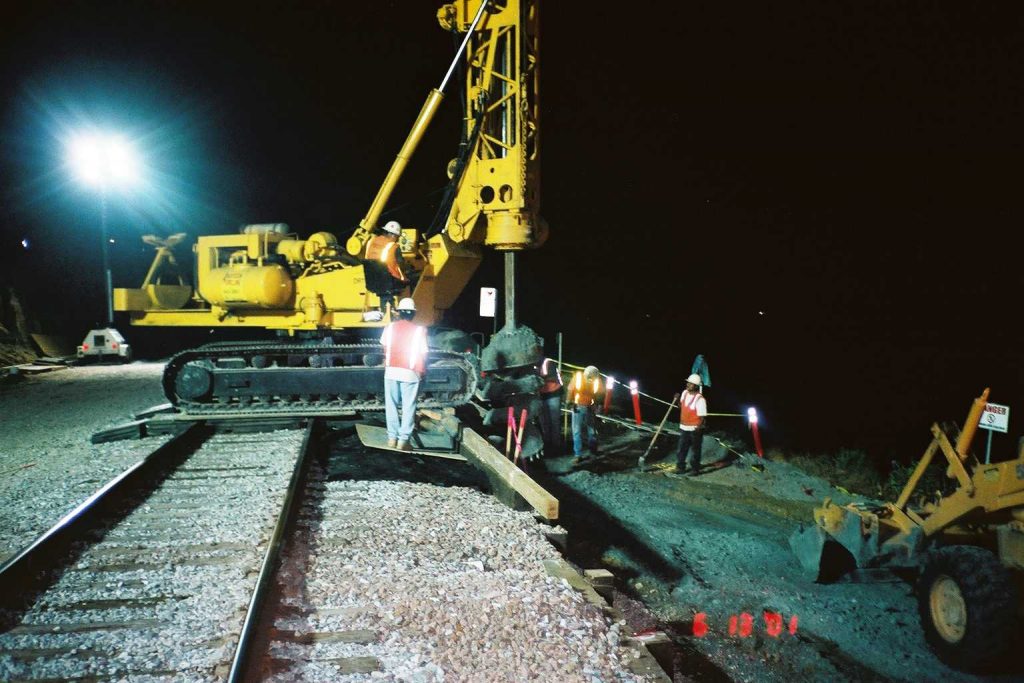
“Part of the issue is when that rain came in, it came in with a lot of silt and debris, and it not only overwhelmed the tracks but it overwhelmed the drainage structures,” said Haggerty. “So we are making sure that that is taken care of and the drainage that is existing is ready to handle the full capacity.
“And then we also are going to be doing additional drainage to make sure we do not have that water coming over the tracks and eroding down the face of the cliff.”
SANDAG is doing everything it possibly can to stabilize the land around the train track, but there still is that unpredictable danger tagged to sudden cliff retreat.
Young said the typical range of retreat in the area around the tracks is about 4 to 6 in. a year, but there were places that retreated 10 ft overnight. Additionally, between 2017-2019, the rate of retreat in some areas was over 3 ft a year, but in some places it was zero.
“The cliff process is very episodic,” claimed Young, “so even though you have these long-term averages they don’t present the possible hazard of what can happen in a instant landslide.”
During the winter of 2018-2019, Young said there were about five or six large landslides in the area, along with several small and medium landslides. Young and his team are still processing the data for the 2019-2020 winter, but he noted there was more rainfall around Christmas that triggered more landslides on the cliffs.
“As far as understanding the actual risk from a day-to-day basis, it is probably more of these episodic large events which are more critical,” said Young.
“Cliffs are inherently unstable by their very nature,” added Barnard. “That is why that landform exists to begin with. But they fail in a somewhat random way.”
Barnard said there are a lot of mechanisms within the cliffs themselves, or properties like how the rocks are fractured, how they are liquefied, and how they are cemented within the cliff that is hard for scientists to research directly. It is an X factor that is worrisome.
“It’s hard to observe when a cliff is becoming inherently unstable at a particular location,” he said. “The geology changes, the fracturing of the rocks changes. So to try and understand all of those different idiosyncrasies of the cliff itself makes it a real problem to address scientifically.”
In the next part of this series, RT&S will take a close look at reinforcement work that is currently going on around the Del Mar cliffs as well as future plans for the train line.
For the latest news, go to www.rtands.com.
Listen to a podcast about the Del Mar destruction.



